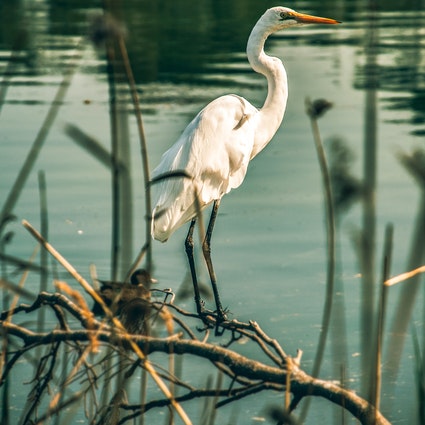Marshes
Marsh is defined as a lowland habitat that is usually flooded all the time. Naturally, grasses and shrubs grow in marshes, but when trees grow there, it is called a swamp. Marshes are often regarded as a transition between aquatic and terrestrial habitats.

Formation of Marshes
Marshes occur in areas of lowlands where drainage is poor. These areas include floodplains of rivers and extensive river deltas. Marshes may develop as a result of water overflowing banks to accumulate on the adjoining coastal or lowland areas, forming marshes that contribute to the accumulation of water and land surface.
Types of Marshes
- Freshwater Marshes:
- Freshwater marshes occur on land, just beyond the limits of saltwater marshes and beyond areas influenced by tides. In this area, freshwater from rivers overflows the river banks to flood the adjoining lowlands, resulting in the formation of freshwater marshes.
- Saltwater Marshes:
- A salt marsh or saltmarsh is a coastal ecosystem in the upper coastal intertidal zone between land and open saltwater or brackish water that is regularly flooded by the tides.
Characteristics
- Nature of soil
- Lowland habitat
- High flooding
- Presence of stagnant water
- Presence of organic matter
- High relative humidity
- High rate of organic decomposition
Examples of Marshes
- Algae
- Oysters
- Frogs
- Crabs
- Crocodiles
- Swordgrass
- Grasses
- Duckweed
Factors Affecting Marsh Habitat
- Rainfall
- Salinity
- Relative humidity
- Light
- Temperature
Differences Between Marshes and Swamps
Swamps usually have deeper standing water and are wet for longer periods of the year, while marshes have rich, waterlogged soils that support plant life.
